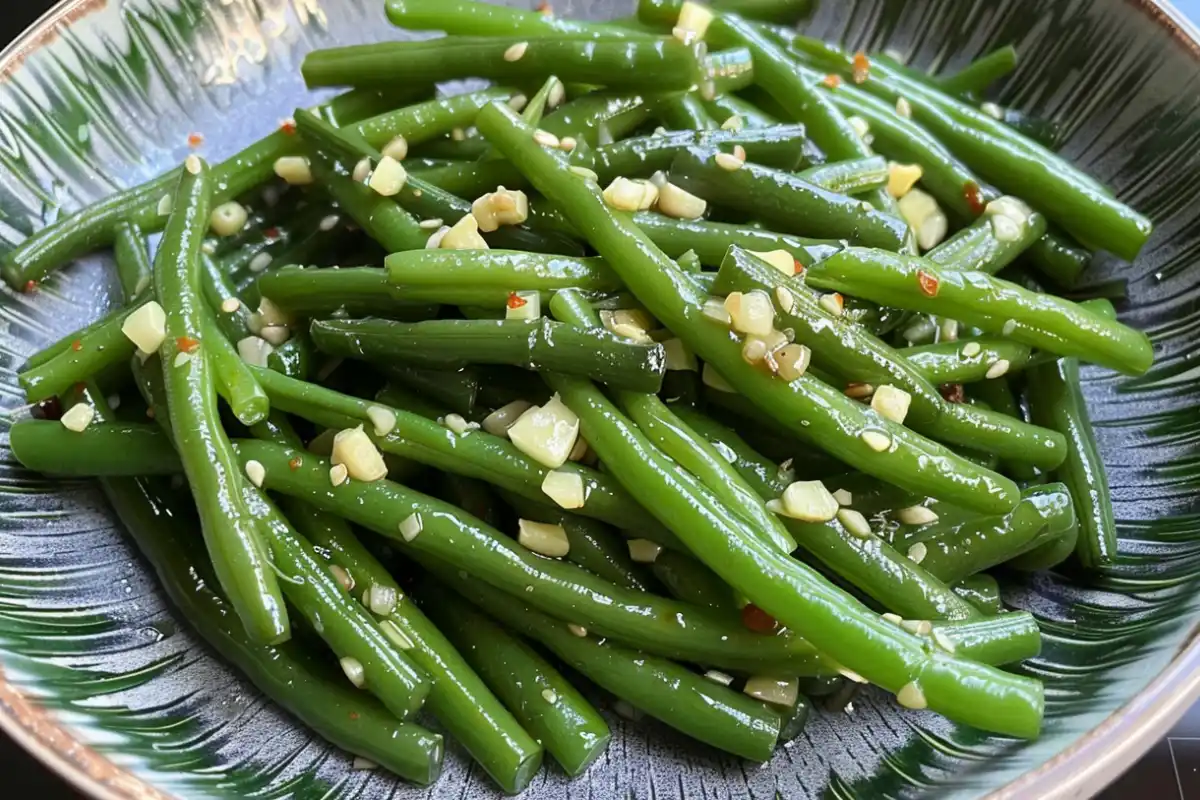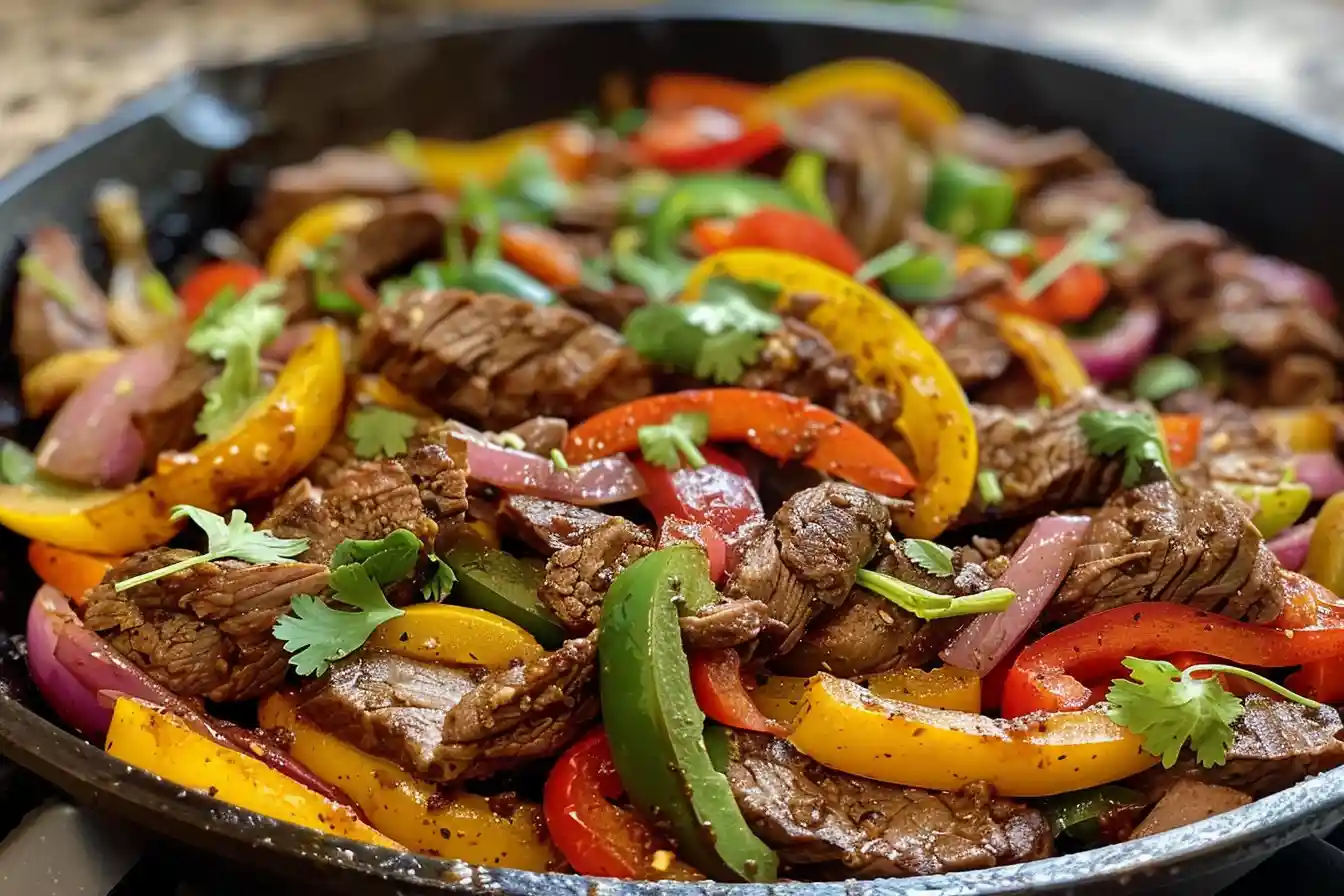Din Tai Fung Green Bean Recipe is a side dish beloved by food enthusiasts worldwide. It’s a simple yet flavorful dish that perfectly balances fresh green beans, garlic, and soy sauce for a taste that’s both savory and satisfying. This article will take you through the authentic Din Tai Fung green bean recipe, step-by-step, so you can recreate it at home. Along the way, you’ll also learn about its origins, nutritional benefits, common mistakes to avoid, and delicious serving suggestions.
The Story Behind Din Tai Fung Green Bean Recipe
Origins and Popularity of the Dish
Din Tai Fung, a globally acclaimed Taiwanese restaurant, is famous for its xiao long bao (soup dumplings) and a variety of sides, including its green beans. This dish stands out for its simplicity, yet it packs a punch of flavor that diners love. The green beans with garlic became popular because they complement other heavy dishes like dumplings, fried rice, or noodle soups, providing a light, crispy, and refreshing contrast.
Why It’s Special
- Perfect balance: The combination of fresh, crisp beans and fragrant garlic sautéed to perfection is what makes the dish a fan favorite.
- Healthier option: It’s a great way to add veggies to a meal in a delicious, low-calorie format.
- Widely versatile: It can be adapted to various flavor profiles, adding your personal twist.
Key Ingredients and Their Role in the Recipe
To create this dish at home, you’ll need a few simple ingredients, all of which play a crucial role in achieving that signature flavor.
Green Beans (Haricot Vert vs. Regular Green Beans)
- Haricot vert (French green beans) are the ideal choice for this recipe. These beans are thinner, more tender, and slightly sweeter than regular green beans.
- Regular green beans can also be used, but they may need slightly more cooking time.
- Freshness is key: Look for firm, bright green beans without blemishes for the best results.
Garlic
- Garlic is central to the flavor profile of this dish.
- Always opt for fresh garlic cloves, as they offer a more intense flavor compared to pre-minced garlic.
- Garlic should be finely minced to release its aroma during the stir-frying process.
Soy Sauce
- Light soy sauce is traditionally used in this recipe. It adds the essential salty, umami flavor while allowing the green beans’ natural taste to shine.
- Dark soy sauce can be too overpowering, so avoid it unless you prefer a richer flavor.
Vegetable Oil (and Alternative Oils)
- Vegetable oil is recommended for its neutral flavor and high smoke point, making it ideal for stir-frying.
- Alternative oils like sesame oil or peanut oil can be used for a nuttier taste. Keep in mind that these oils will subtly alter the flavor.
Salt and Optional Seasonings
- Salt is used sparingly in this dish, as the soy sauce already adds saltiness.
- Optional seasonings like white pepper or chili flakes can be added if you want to spice things up.
Essential Kitchen Equipment
Wok or Skillet
A wok is the best tool for this recipe because it allows for quick, even cooking at high temperatures. If you don’t have a wok, a large non-stick skillet will work as well.
Spider Strainer
A spider strainer or a slotted spoon is useful for quickly draining the green beans after blanching. This helps retain their crisp texture.
Sharp Knife and Cutting Board
A sharp knife is essential for mincing the garlic and trimming the green beans neatly. A good-quality cutting board will make the prep work easier and safer.

Preparing the Green Beans: Step-by-Step Guide
Follow this detailed guide to recreate Din Tai Fung’s signature green bean dish at home.
Step 1: Cleaning and Trimming the Beans
- Wash the green beans under cold water to remove any dirt.
- Trim the ends of the green beans using a sharp knife.
- Pro tip: Keep the beans uniform in length for even cooking.
Step 2: Blanching the Beans
Blanching is a crucial step to maintain the beans’ crispness and vibrant color.
- Bring a pot of water to a boil and add a pinch of salt.
- Add the green beans and blanch for 2-3 minutes until they turn bright green.
- Immediately transfer the beans to a bowl of ice water to stop the cooking process.
Step 3: Drying the Beans Thoroughly
- After blanching, use a paper towel or clean kitchen towel to pat the beans dry.
- Important: Ensuring the beans are dry will help them fry better without steaming in the pan.
Step 4: Sautéing Garlic to Release Flavor
- Heat 2 tablespoons of vegetable oil in your wok or skillet over medium-high heat.
- Add the minced garlic and sauté until fragrant (about 30 seconds). Be careful not to burn the garlic, as this will result in bitterness.
Step 5: Stir-Frying the Green Beans
- Increase the heat to high and add the dry green beans to the wok.
- Stir-fry the beans for 3-5 minutes, tossing frequently to ensure even cooking and avoid burning.
Step 6: Adding Soy Sauce and Seasoning
- Add 1-2 tablespoons of soy sauce to the beans while stir-frying.
- Toss the beans quickly to coat them evenly in the sauce.
- Season with a small pinch of salt if needed, and any optional seasonings like white pepper or chili flakes.
Step 7: Serving the Green Beans
- Remove the beans from the heat and transfer them to a serving plate.
- Garnish with additional minced garlic or a sprinkle of sesame seeds if desired.
Authentic vs. Adapted Versions of the Recipe
The Authentic Din Tai Fung Version
The original recipe at Din Tai Fung uses minimal ingredients and focuses on the natural flavors of the green beans and garlic. Recreating this at home involves sticking to the basics: fresh green beans, garlic, soy sauce, and a little oil.
Healthier Modifications
- Reduce oil: For a lighter version, reduce the amount of oil used or try air-frying the beans.
- Low-sodium soy sauce: Opt for low-sodium soy sauce if you’re watching your salt intake.
- Steamed instead of stir-fried: You can steam the green beans and toss them in garlic and soy sauce for a no-oil version.
Creative Variations on the Recipe
- Add a dash of chili oil for a spicy kick.
- Try incorporating grated ginger for added depth of flavor.
- Experiment with using black bean sauce or oyster sauce for a richer taste.
Common Mistakes to Avoid
Overcooking the Green Beans
- Overcooked beans will become soggy and lose their vibrant color.
- To avoid this, be sure to follow the blanching and stir-frying times carefully.
Burning the Garlic
- Garlic burns quickly, especially when stir-frying at high heat.
- Keep an eye on the garlic and stir it frequently to avoid a bitter taste.
Using Too Much or Too Little Soy Sauce
- Adding too much soy sauce will overpower the beans, while too little will leave them bland.
- Start with 1-2 tablespoons and adjust according to taste.
Skipping the Blanching Process
- Blanching locks in the beans’ color and texture, so don’t skip this step.
- Without blanching, the beans may end up tough and undercooked.
Serving Suggestions and Pairing Ideas
Perfect Complements to Din Tai Fung Green Beans Recipe
This dish pairs well with a variety of Chinese and Taiwanese dishes:
- Xiao long bao (soup dumplings)
- Fried rice or noodles
- Steamed fish or braised pork
Wine and Beverage Pairings
- White wines like a crisp Sauvignon Blanc or Chardonnay work well with this dish.
- Non-alcoholic options include jasmine tea or a refreshing lemon iced tea.
Plating and Presentation Tips
- Serve the green beans in a shallow dish with a sprinkle of sesame seeds or chopped green onions for a visually appealing presentation.
- For a more formal presentation, arrange the beans neatly in a fan shape.

How to Store and Reheat Leftover Din tai fung green bean recipe ?
Storing Green Beans
- Store leftovers in an airtight container in the fridge for up to 3 days.
- Avoid freezing, as this can ruin the texture of the beans.
Reheating Without Losing Texture
- Reheat the beans in a hot wok or skillet with a splash of oil to restore their crispness.
- Alternatively, spread them on a baking sheet and heat in the oven at 350°F (175°C) for about 5 minutes.
Nutritional Information and Health Benefits
Caloric Breakdown of the Dish
A standard serving of this dish is relatively low in calories:
- Calories per serving: Approximately 120-150 calories
- Macronutrients: High in fiber, low in fat, and packed with vitamins.
Health Benefits of Green Beans
- Rich in vitamins A, C, and K: Green beans are loaded with nutrients that support immune health and bone strength.
- Good source of fiber: Promotes healthy digestion and helps maintain blood sugar levels.
Reducing Sodium and Fat Content
- Use low-sodium soy sauce to reduce the salt content.
- Reduce or eliminate the oil if following a low-fat diet.
FAQs About Din Tai Fung Green Beans Recipe
Yes, you can use frozen green beans, but fresh beans are preferred for their superior texture and flavor.
If using frozen beans, allow them to thaw completely before blanching.
Tamari or coconut aminos are excellent gluten-free substitutes for soy sauce.
Both options will provide the same umami flavor without the gluten.
Yes, the beans can be blanched and stored in the refrigerator for up to a day before stir-frying.
Reheat them quickly in a wok or skillet to preserve their crispness.
Vegetable oil is the most neutral and commonly used oil for stir-frying.
Sesame oil or peanut oil can be used for added flavor but be aware that they may alter the dish’s taste slightly.
The best way to maintain the beans’ crisp texture is to reheat them quickly in a hot pan or oven.
Avoid using a microwave, as it will make the beans soggy.
Conclusion
Din tai fung green bean recipe is a classic side dish that’s easy to make and packed with flavor. With a handful of ingredients and the right cooking techniques, you can enjoy this restaurant-quality dish at home. Whether you stick to the authentic version or experiment with variations, these green beans will quickly become a staple in your meal rotation.
Key Takeaways:
- Focus on high-quality ingredients like fresh green beans and garlic.
- Don’t skip steps like blanching and drying the beans for the best results.
- Experiment with flavor twists, but always keep the essence of the dish in mind.
We encourage you to give this recipe a try and share your feedback. Happy cooking!





